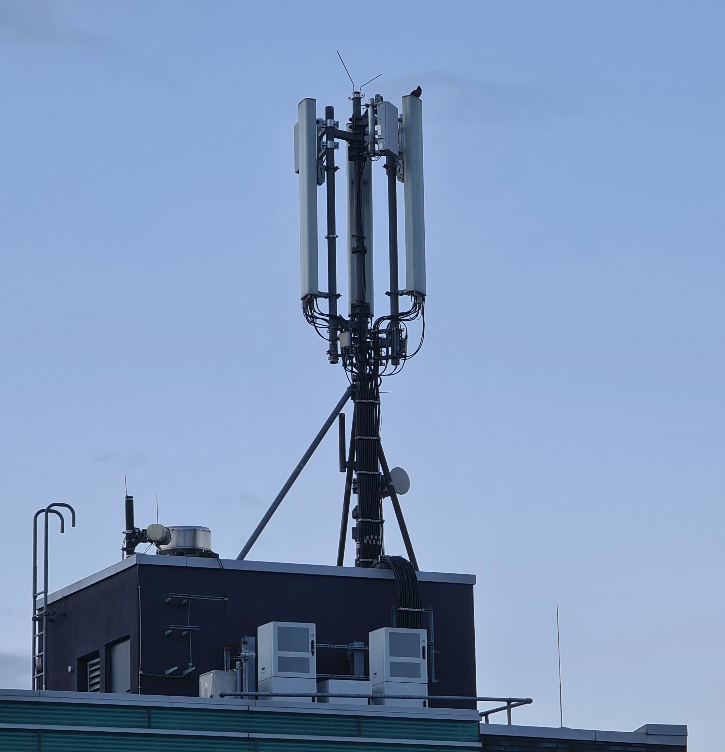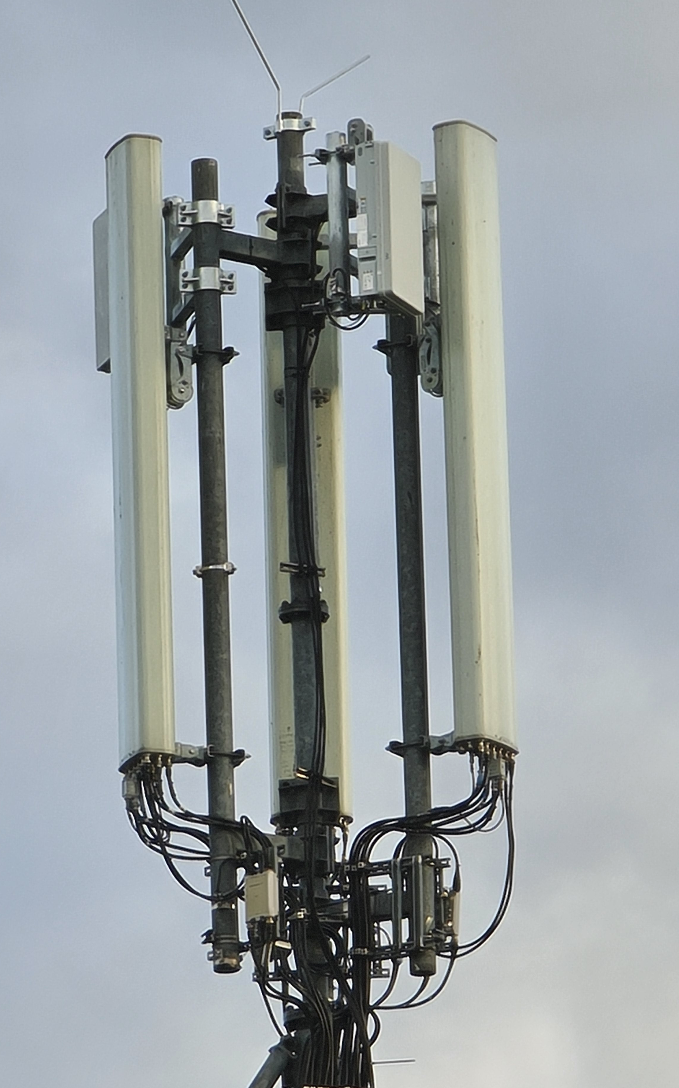 I have a cell site sitting on the building right across the street and two years ago I had a post here with some pictures of how the site has changed over the past 10 years. On average, changes are done every two years. So I guess it was time again when things were once again changed recently.
I have a cell site sitting on the building right across the street and two years ago I had a post here with some pictures of how the site has changed over the past 10 years. On average, changes are done every two years. So I guess it was time again when things were once again changed recently.
If you compare the picture above with those in my post 2 years ago, you will notice the additional small antennas that have been installed next to the bigger ones. Those are typical 5G n78 (3.5 GHz) active antenna systems (AAS)! In other words, the cell site has been upgraded to 5G!
Camera technology has evolved a bit as well so this time around I have a close up where you can see quite some details. While there are quite a number of coaxial cables terminating at the big antennas, there are only a few cables going into the AAS antenna. That’s because the bigger antennas are passive and serve a number of different frequency bands, typically 800 MHz, 900 MHz, 1800 MHz, 2100 MHz and 2600 MHz for a mix of GSM, UMTS and LTE. The small AAS antenna is not connected at all with coaxial cables. That is because the remote radio head and the advanced electronics for beam forming and steering are part of the antenna. That means there’s only fiber connectivity to the baseband and a power cable.
